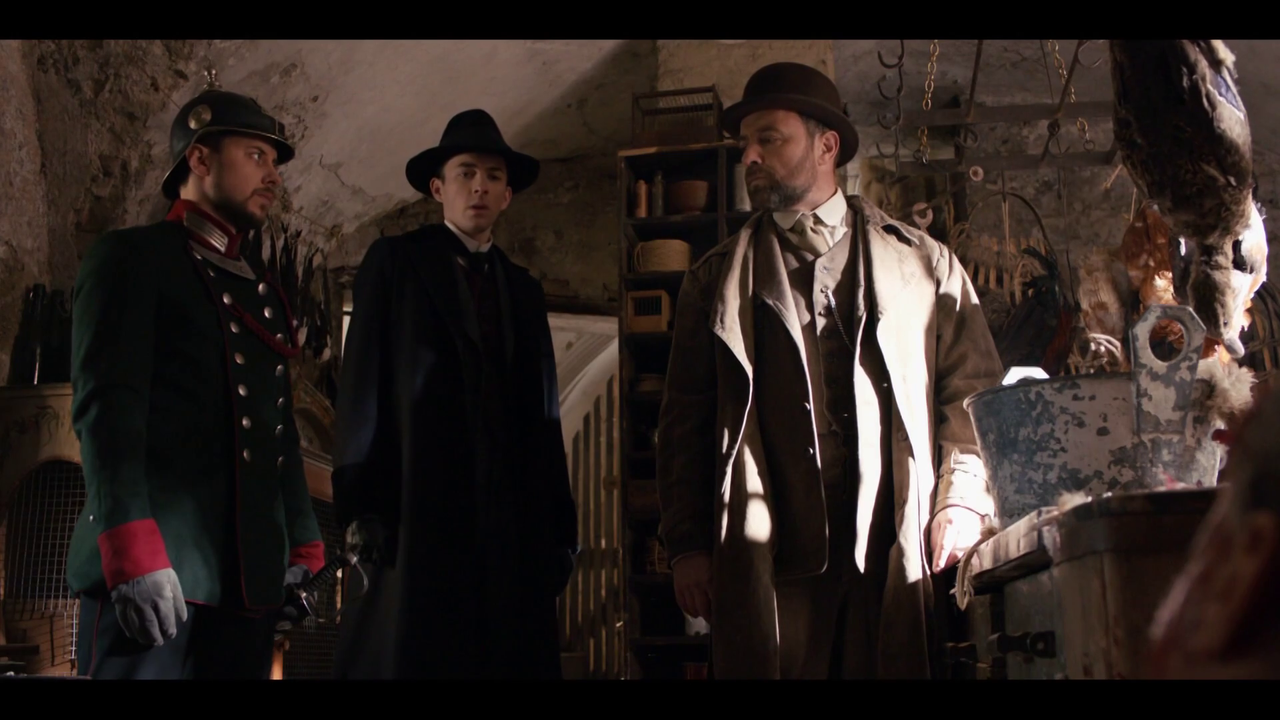


#VIENNA BLOOD HOW TO#
Thomas Oláh noted that while Vienna was the city of Freud and Mahler, 1906-7 was “exactly the time when Hitler lived in the city…of course, we considered how to pick up on that in the looks.” Max’s father runs a high-end drapery shop, so he has the income and access to afford the best fabrics in a mature, restrained palette of midnight blue, loden green, and charcoal gray. In Vienna Blood, the young Freudian Max Liebermann (Matthew Beard) needs to wear a certain upper middle-class uniform to fit into status-obsessed Viennese society, but he has to look even more respectable than the average young Austrian professional, because he’s Jewish.
#VIENNA BLOOD LICENSE#
Chamberlain herself, were viewed with disdain in their time-gave Walicka-Maimone and Tripplehorn license to conceive of her costumes as wearable art, through “a sculptural approach.”
#VIENNA BLOOD FULL#
Chamberlain’s extraordinary wealth and her commitment to supporting art she believed in-her home is full of masterpieces by leading Impressionists including Degas, Monet, and Caillebotte, who, like Mrs. Chamberlain, was “heavily influenced by the paintings because there’s a certain level of stepping back from the documentary approach to a bit more stylized approach, never leaving the era and historical grounding of the period.” Mrs. Kasia Walicka-Maimone’s work with Jeanne Tripplehorn to visually realize her character, the controversial art collector Mrs. In interviews with Town & Country, the designers for The Gilded Age and Vienna Blood particularly relished describing how their collaborations with colleagues and actors are informed by inspirations drawn from visual arts and social conditions of the eras depicted in the show.

In both cases, strict adherence to the slippery concept of accuracy takes a backseat to letting the imaginations of designers Kasia Walicka-Maimone ( The Gilded Age) and Janie Bryant ( 1883) run free in service of creating characters who leap off the screen.īelow, a conversation about how the costume designers of each show approach the design process, from research and lookbooks to renting and building each character’s wardrobe. Set just one year apart in America, The Gilded Age and 1883 could not be more distinct where The Gilded Age offers a high-end, urbane soap opera à la Downton Abbey, where the fabulously wealthy main characters may wear up to three different gowns in a single day, 1883 aims for the gritty, sweaty, violent realities of Westward expansion while being limited to a single trunk’s worth of options for each character. Oláh and his team used “a pan-European approach” to source items from rental houses in Madrid, Paris, Berlin, Rome, and even rural Bavaria. To conjure 1906-1907 in Vienna Blood, he relied on an eclectic combination of photographs, vintage inspiration pieces, and custom-built original designs. That world you draw has to make sense within itself,” costume designer Thomas Oláh recently told Town & Country. “Designing for period pieces is very similar to science fiction, because you can do whatever you want, as long as it's coherent.
#VIENNA BLOOD SERIES#
The arcs of these series cover the 25-year period spanning 1882-1907, giving viewers a bevy of glimpses into how fashions of the era developed incrementally, and the impact of a rural versus a metropolitan setting. We’re living through such a costume drama-rich time on TV that three shows covering roughly the same period have been simultaneously airing in the U.S.: HBO’s The Gilded Age, Paramount+'s 1883, and PBS’s Vienna Blood.


 0 kommentar(er)
0 kommentar(er)
